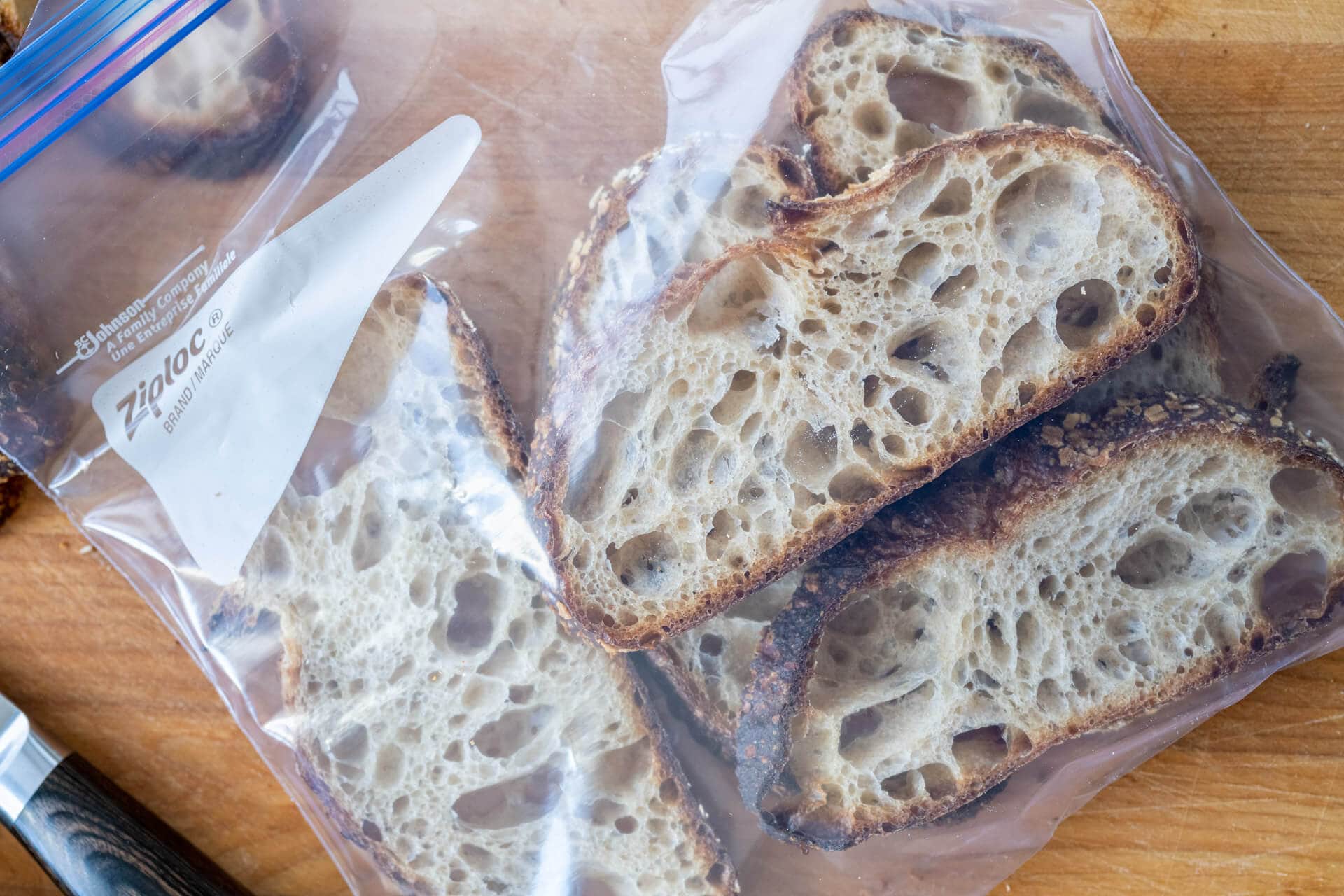

Articles
How To Store Sourdough Bread In Fridge
Modified: February 23, 2024
Learn the best methods for storing sourdough bread in the fridge to maintain its freshness and texture. Discover expert tips in this informative article.
(Many of the links in this article redirect to a specific reviewed product. Your purchase of these products through affiliate links helps to generate commission for Storables.com, at no extra cost. Learn more)
Introduction
When it comes to enjoying a fresh loaf of sourdough bread, it is essential to store it properly to maintain its flavor and texture for as long as possible. While keeping it at room temperature is the traditional way of storing bread, there are certain instances where refrigeration may be necessary. In this article, we will explore the reasons for storing sourdough bread in the fridge, factors to consider before refrigeration, steps to store it correctly, tips for maintaining freshness, and how to revive refrigerated sourdough bread for optimal taste.
Sourdough bread is known for its distinctive tangy flavor, chewy texture, and longer shelf life compared to other types of bread. This is due to the natural fermentation process involved in making sourdough bread, which results in the production of lactic acid bacteria and the formation of a sourdough starter. However, the delicate balance of moisture and microbes in sourdough bread also means that proper storage is crucial to prevent staleness, mold growth, or loss of flavor.
Refrigerating sourdough bread can be beneficial in certain situations. For instance, if you have a large batch or a loaf that won’t be consumed within a couple of days, refrigeration can help extend its shelf life. Additionally, during hot and humid weather, refrigeration can help prevent mold growth and keep the bread fresh for a longer period.
Despite the advantages, there are a few factors to consider before refrigerating sourdough bread. The cold temperature of the fridge can cause the bread to dry out and become stale more quickly. Furthermore, refrigeration can cause the bread’s crust to lose its crispness. However, with the right techniques and steps, you can minimize these effects and ensure that your sourdough bread remains delicious and enjoyable.
In the following sections, we will guide you through the process of properly storing sourdough bread in the fridge to maintain its quality and taste. Whether you are a bread enthusiast, a home baker, or someone who just wants to make the most of your sourdough bread, this article will provide you with valuable tips and insights on refrigerating sourdough bread.
Key Takeaways:
- Properly storing sourdough bread in the fridge can extend its shelf life, prevent mold growth, and maintain its quality during hot and humid weather, ensuring a delicious and enjoyable bread-eating experience.
- Reviving refrigerated sourdough bread can be achieved through various methods such as allowing it to come to room temperature, using a toaster or oven, or adding toppings and fillings, restoring its crustiness, flavor, and texture for a delightful eating experience.
Read more: How To Store Sourdough Starter In The Fridge
Why Store Sourdough Bread in the Fridge?
Sourdough bread, with its unique flavor and texture, requires special care to maintain its freshness and quality. While storing bread at room temperature is the norm, there are circumstances where refrigeration becomes necessary. Let’s explore the reasons why storing sourdough bread in the fridge can be advantageous:
- Extended Shelf Life: Sourdough bread stored in the fridge lasts longer compared to leaving it at room temperature. The cold environment of the refrigerator slows down the growth of mold and bacteria, helping to preserve the bread’s freshness for an extended period.
- Mold Prevention: The moisture content in sourdough bread can make it susceptible to mold growth, especially in humid climates. Refrigeration significantly reduces the chances of mold developing on your loaf, ensuring that it stays safe to consume.
- Hot and Humid Weather: During hot and humid weather conditions, keeping sourdough bread in the fridge helps to retain its quality. The cooler temperature prevents the bread from becoming overly moist and developing an unpleasant texture.
- Better Crumb Structure: Sourdough bread’s crumb structure can benefit from refrigeration. The chilled environment slows down the staling process and allows the bread to retain its moisture, resulting in a chewy and moist crumb even after a few days.
- Convenience: Refrigerating sourdough bread allows you to have a readily available supply that can be enjoyed at any time. It eliminates the need for daily trips to the bakery and ensures that you have freshly baked bread on hand whenever you crave it.
While these reasons make a compelling case for refrigerating sourdough bread, it’s essential to note that not all breads will benefit from being placed in the fridge. Some bread, such as baguettes or breads with delicate crusts, may not fare well in the cold environment and could become stale or lose their texture.
Now that we understand the advantages of refrigeration, it’s crucial to consider a few factors before storing sourdough bread in the fridge. Next, we’ll explore these factors to help you make informed decisions about refrigerating your delicious homemade or store-bought sourdough bread.
Factors to Consider Before Refrigerating Sourdough Bread
While refrigerating sourdough bread can help extend its shelf life, there are some important factors to consider before placing your loaf in the fridge. These considerations will help you maintain the bread’s flavor, texture, and overall quality throughout the refrigeration process. Here are the main factors to keep in mind:
- Freshness: It’s crucial to start with a fresh loaf of sourdough bread before refrigerating it. If the bread is already stale or past its prime, refrigeration may not bring it back to its original quality. Ideally, refrigerate your sourdough bread within the first two to three days after baking or purchasing.
- Storage Conditions: Before refrigeration, ensure your sourdough bread is stored properly at room temperature. Keep it in a paper bag or a bread box to protect it from excessive moisture and prevent it from drying out. Airtight containers can trap moisture, leading to a soggy crust.
- Slicing: Consider slicing your sourdough bread before refrigerating it. This allows for easier access and portioning once the bread is cold. It’s best to use a serrated bread knife for clean and even slices. However, if you prefer to keep the loaf whole, that is fine too.
- Protection: To prevent the bread from absorbing unwanted flavors or odors from the fridge, it’s advisable to wrap it securely. Use either plastic wrap, airtight bags, or beeswax wraps to keep your sourdough bread protected.
- Cooling: Allow the sourdough bread to cool completely at room temperature before refrigeration. This ensures that excess moisture has evaporated, preventing the bread from becoming soggy while in the fridge.
- Crust Care: Understand that refrigeration can affect the crust texture of sourdough bread. The cold temperature can cause the crust to become less crispy and more chewy. If you prefer a crusty texture, consider toasting or reheating the bread before consumption.
By considering these factors, you can ensure that your sourdough bread retains its quality and deliciousness while in the fridge. Properly storing and slicing the bread, protecting it from moisture or odors, and allowing it to cool before refrigeration will help preserve its flavor and texture.
In the next section, we will dive into the steps to store sourdough bread correctly in the fridge, so you can enjoy it for an extended period without compromising its deliciousness.
Steps to Store Sourdough Bread in the Fridge
Properly storing sourdough bread in the fridge is crucial to maintain its freshness and quality. Follow these steps to ensure that your loaf stays delicious for an extended period:
- Cool Completely: Allow your freshly baked or purchased sourdough bread to cool completely at room temperature. This step helps to prevent excess moisture buildup and ensures that the bread retains its texture.
- Wrap it Securely: Once the bread is cooled, wrap it securely to protect it from drying out or absorbing unwanted flavors. You can use plastic wrap, airtight bags, or beeswax wraps. Ensure that the wrapping is tight and covers the entire loaf.
- Choose the Right Container: If you prefer to store your bread in a container rather than wrapping it, choose one that provides enough space for the bread to breathe but prevents it from drying out. A bread box or a food-grade container with vented sides or a lid with air holes is ideal for this purpose.
- Place it on a Shelf: Find a spot in your refrigerator that offers stable temperature and humidity conditions. Avoid storing sourdough bread near items with strong odors as it can absorb them. Placing the bread on a middle or lower shelf can help maintain a steady temperature.
- Avoid Overstacking: If you have multiple loaves or slices to store, avoid overstacking them on top of each other. Overcrowding can lead to uneven cooling and potentially affect the texture of the bread. Instead, leave space between the slices or loaves.
- Monitor Moisture: Check the bread periodically while in the fridge to ensure it remains moist but not overly soggy. If you notice excessive moisture, consider rewrapping the bread or transferring it to a different container with better ventilation.
- Use Within a Reasonable Timeframe: While storing sourdough bread in the fridge can prolong its shelf life, it is best to consume it within a week for optimal flavor and texture. Over time, the bread may become stale or lose its freshness even when refrigerated.
By following these steps, you can effectively store your sourdough bread in the fridge and maintain its quality. Remember to wrap it securely, choose the right container, and monitor its moisture levels regularly. When it’s time to enjoy a slice, you can either eat it cold, bring it to room temperature, or lightly toast or reheat it to restore its crusty texture.
Next, we will provide some valuable tips for maintaining freshness and quality while your sourdough bread is refrigerated.
Store sourdough bread in the fridge by wrapping it in a clean, dry cloth or placing it in a paper bag to prevent it from drying out. Avoid storing it in plastic as it can make the crust soggy.
Tips for Maintaining Freshness and Quality of Refrigerated Sourdough Bread
Refrigerating sourdough bread can help prolong its shelf life, but it’s essential to take certain precautions to maintain its freshness and quality throughout the storage period. Follow these tips to ensure that your refrigerated sourdough bread stays delicious:
- Keep it Moist: Sourdough bread tends to dry out more quickly in the fridge. To prevent this, store it in airtight bags or wrap it tightly with plastic wrap, beeswax wraps, or aluminum foil. This helps retain moisture and prevents the bread from becoming overly dry.
- Avoid Moisture Buildup: While it’s important to keep the bread moist, excessive moisture can lead to a soggy texture. Check the bread periodically and remove any condensation that may have accumulated in the packaging or container. If necessary, rewrap the bread in a fresh wrapping.
- Slice Before Freezing: If you plan to freeze a portion of your sourdough bread for future use, consider slicing it before freezing. This allows you to thaw and use individual slices as needed without having to defrost the entire loaf.
- Reheat or Toast: When you’re ready to enjoy a slice of refrigerated sourdough bread, consider toasting or reheating it to bring back its crusty texture. You can lightly toast it in a toaster or warm it in a preheated oven for a few minutes. This will restore the crust and enhance the overall eating experience.
- Store Sliced Bread Separately: If you sliced your sourdough bread before refrigeration, it’s advisable to store the slices separately to prevent them from sticking together. Place a layer of parchment or wax paper between each slice to maintain their individuality and make it easier to grab a single slice when needed.
- Use a Bread Knife: When slicing refrigerated sourdough bread, use a serrated bread knife to ensure clean cuts and minimize squishing. Avoid using a regular kitchen knife, as it can compress the bread and affect its texture.
- Label and Date: If you have multiple items in your fridge, it can be helpful to label and date your sourdough bread. This ensures that you know how long it has been refrigerated and makes it easier to keep track of its freshness.
By following these tips, you can maintain the freshness and quality of your refrigerated sourdough bread. Proper wrapping, monitoring moisture levels, reheating or toasting when necessary, and organizing your storage space will all contribute to a better sourdough bread-eating experience.
Now that you have a grasp of how to maintain the freshness of refrigerated sourdough bread, let’s explore how long you can store it in the fridge before it starts to lose its taste and quality.
Read more: How To Store Sourdough
How Long Can Sourdough Bread Be Stored in the Fridge?
Refrigerating sourdough bread can help extend its shelf life compared to leaving it at room temperature. However, it’s important to note that even when refrigerated, sourdough bread will eventually start to lose its freshness and quality. The exact timeframe may vary depending on several factors, such as the bread’s initial freshness, storage conditions, and individual preferences. Here’s a general guideline on how long you can store sourdough bread in the fridge:
1. Up to 5-7 Days: In most cases, properly stored sourdough bread can stay fresh in the fridge for about 5 to 7 days. During this time, it should maintain its flavor, texture, and overall quality. It’s important to check the bread periodically for any signs of mold or staleness.
2. Freezing for Longer Storage: If you want to keep your sourdough bread for even longer, freezing is a great option. Before freezing, slice the bread and individually wrap each slice or wrap the whole loaf tightly in plastic wrap or aluminum foil. Frozen sourdough bread can typically be stored for up to 3 months without significant loss of quality.
It’s important to remember that these timeframes are general estimates and can vary based on various factors. The freshness of the bread before refrigeration, the conditions of your fridge, and how well the bread is wrapped and protected can all impact its longevity.
When storing your sourdough bread in the fridge, it’s best to err on the side of caution and consume it within a reasonable timeframe. As with any food product, it’s always recommended to exercise your judgment and use your senses to determine if the bread is still fresh and safe to consume.
Now that you know how long sourdough bread can be stored in the fridge, let’s explore how to revive refrigerated sourdough bread for optimal taste.
How to Revive Refrigerated Sourdough Bread for Optimal Taste
If you have refrigerated sourdough bread and want to restore it to its optimal taste and texture, there are a few simple methods you can try. These techniques will help bring back the crustiness and flavors that you love in sourdough bread. Here’s how you can revive refrigerated sourdough bread:
- Room Temperature Method: Take the refrigerated sourdough bread out of the fridge and let it come to room temperature naturally. This can take a few hours, depending on the size of the loaf. Allowing the bread to warm up gradually helps restore some of its original texture and flavor.
- Toaster or Oven Method: If you prefer a warm and crusty slice of sourdough bread, you can use a toaster or oven to revive it. For a toaster, simply slice the refrigerated bread, pop it in the toaster, and toast it on a medium setting until it reaches your desired level of crispness. If using the oven, preheat it to around 350°F (175°C), place the bread on a baking sheet, and warm it for 5-10 minutes until it becomes warm and crusty.
- Steam Method: If you want to restore the crustiness of the refrigerated sourdough bread, you can use the steam method. Preheat your oven to around 400°F (200°C). Place the bread directly on the oven rack or on a baking sheet and then pour a bit of water into a shallow pan or use a spray bottle to mist water into the oven. The steam will help revive the crust and give it a crunchy texture. Bake the bread for 5-10 minutes until it reaches your desired level of crispness.
- Slice and Freeze Method: If you have more bread than you can consume in a short timeframe, you can slice the refrigerated sourdough bread and freeze the individual slices. When you’re ready to enjoy a slice, you can toast it straight from the freezer or let it thaw at room temperature and then use one of the aforementioned methods to revive its texture.
- Topping and Fillings: If your sourdough bread has lost some of its moisture or becomes slightly stale, you can revive it by adding delicious toppings or using it for sandwiches and fillings. Toast or lightly warm a slice, then add butter, olive oil, avocado, or your favorite spreads. You can also use the bread for gourmet sandwiches or toasties, packing it with flavorful fillings to enhance the overall taste.
By using these methods, you can revive refrigerated sourdough bread, restoring its crustiness, flavor, and texture for a delightful eating experience. Experiment with different methods to find the one that suits your preferences and enjoy your sourdough bread as if it was freshly baked.
Now that you know how to revive refrigerated sourdough bread, let’s wrap up the article.
Conclusion
Sourdough bread is a beloved staple in many households, known for its unique flavor, chewy texture, and longer shelf life compared to other types of bread. Proper storage is essential to maintain its freshness and quality, and while keeping it at room temperature is the traditional method, there are instances where refrigeration becomes necessary.
In this article, we explored the reasons for storing sourdough bread in the fridge, such as extending its shelf life, preventing mold growth, and preserving its quality during hot and humid weather. We discussed the factors to consider before refrigeration, such as starting with a fresh loaf, choosing the right container, and protecting the crust.
We delved into the steps for storing sourdough bread in the fridge, emphasizing the need to cool it completely, wrap it securely, and monitor moisture levels. Additionally, we provided tips for maintaining the freshness and quality of refrigerated sourdough bread, including slicing before freezing, reheating or toasting, and labeling and dating for better organization.
We also touched upon the recommended timeframe for storing sourdough bread in the fridge, which is typically around 5 to 7 days, with the option to freeze for longer storage. Lastly, we explored various methods to revive refrigerated sourdough bread, such as allowing it to come to room temperature, using a toaster or oven, or even adding toppings and fillings for a flavorful twist.
By following these guidelines and techniques, you can ensure that your sourdough bread remains delicious and enjoyable, even when stored in the fridge. Remember to assess the bread’s freshness, adjust storage techniques based on your preferences, and trust your senses to determine if the bread is still good to consume.
So, whether you’re a bread enthusiast, home baker, or someone who wants to make the most of your sourdough bread, applying these storage and revival methods will help you savor every slice and relish the unique qualities that make sourdough bread a culinary delight.
Frequently Asked Questions about How To Store Sourdough Bread In Fridge
Was this page helpful?
At Storables.com, we guarantee accurate and reliable information. Our content, validated by Expert Board Contributors, is crafted following stringent Editorial Policies. We're committed to providing you with well-researched, expert-backed insights for all your informational needs.
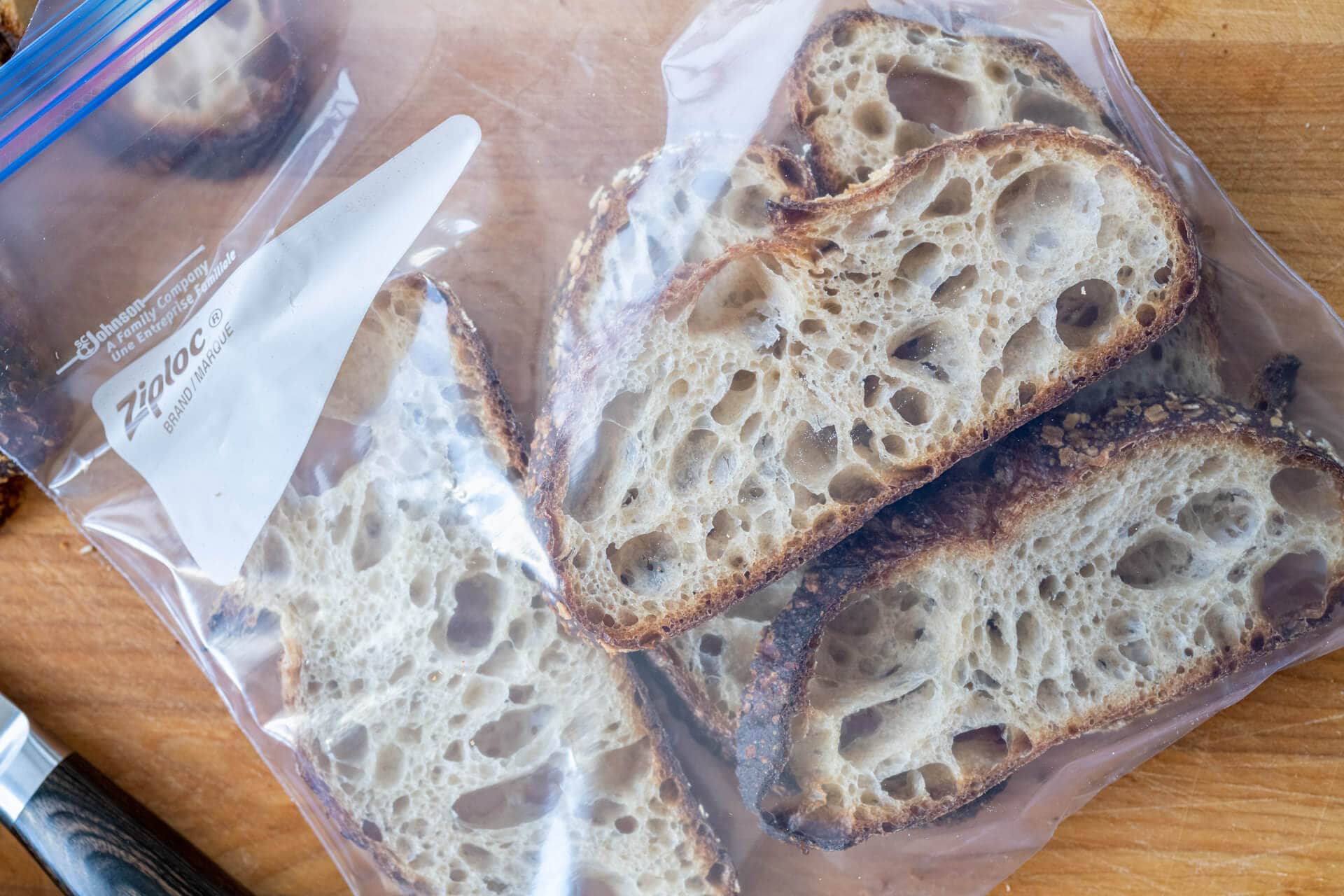

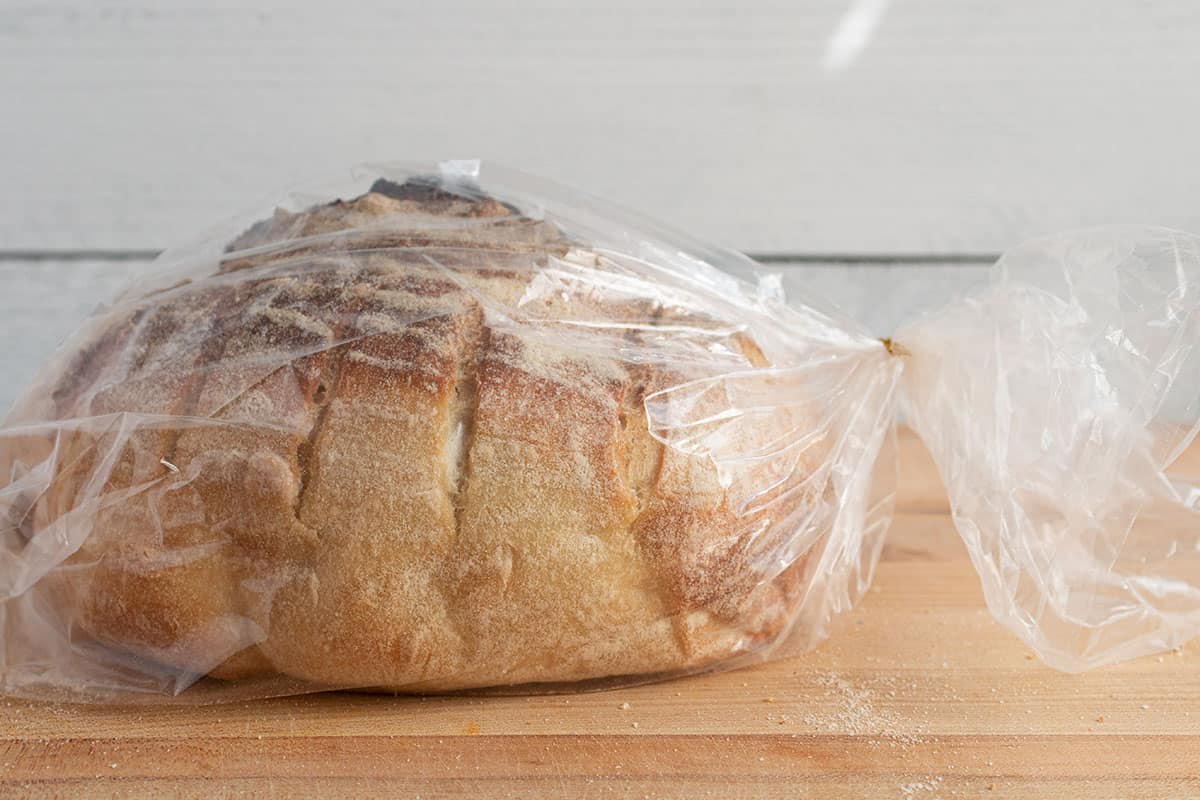

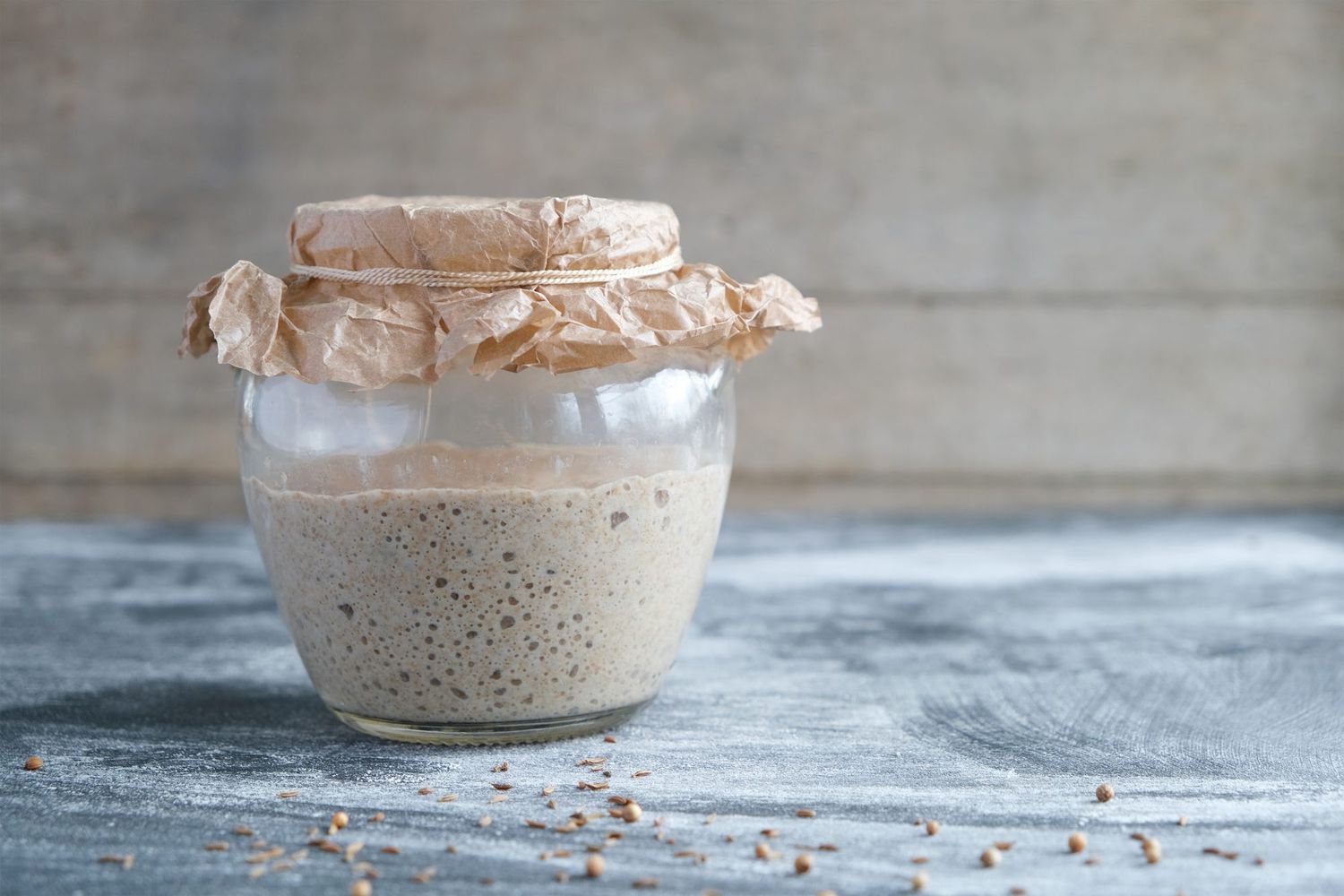
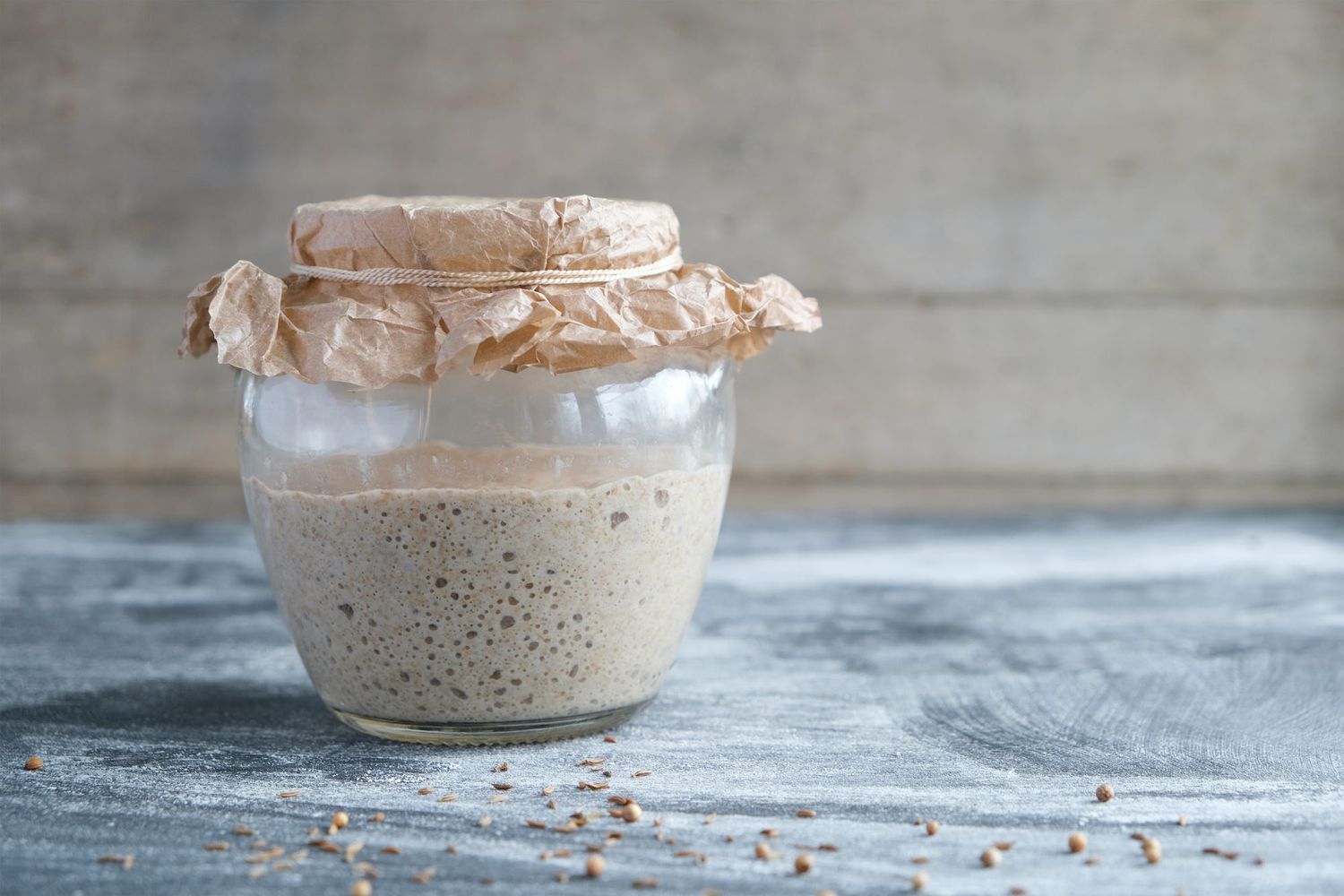






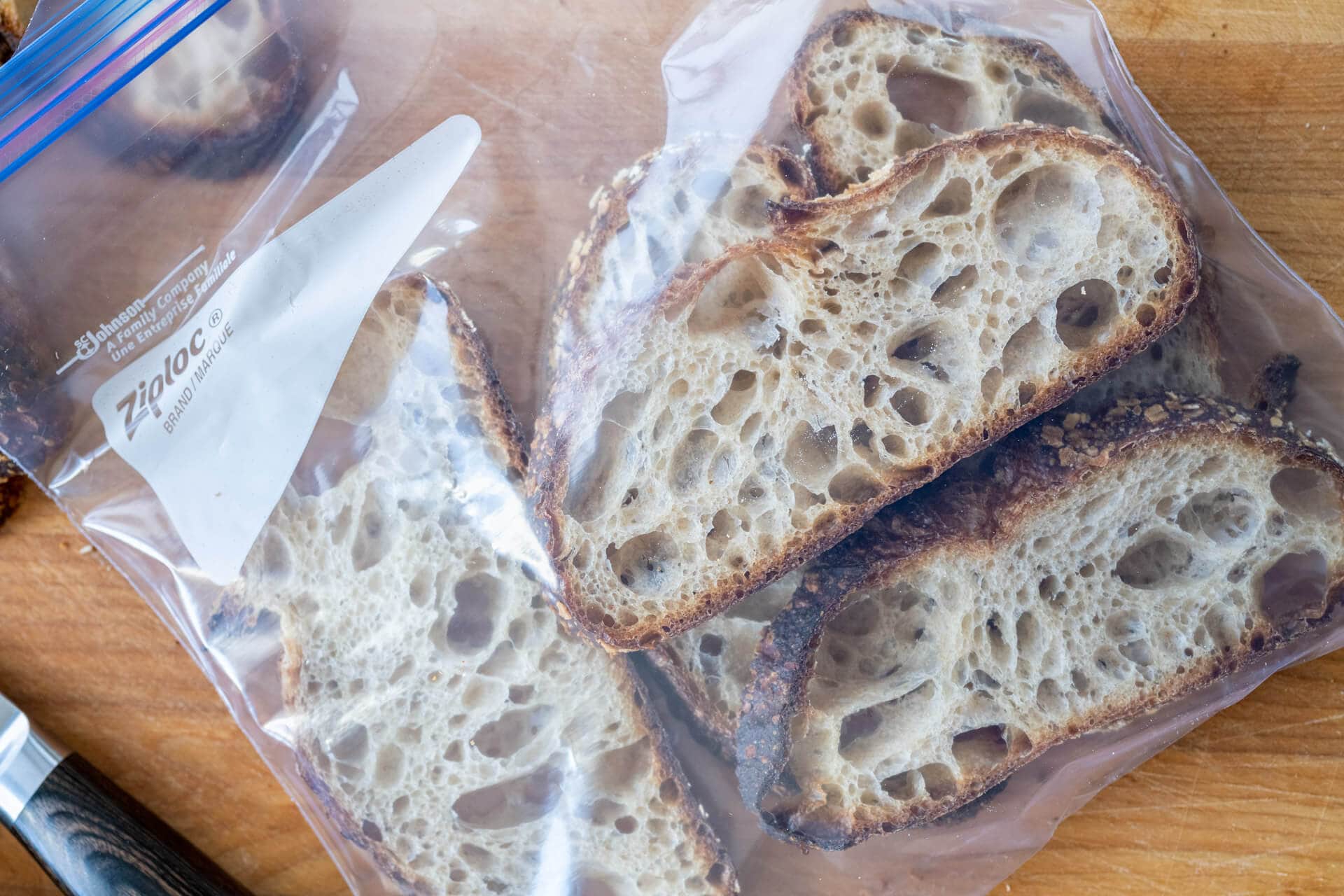


0 thoughts on “How To Store Sourdough Bread In Fridge”